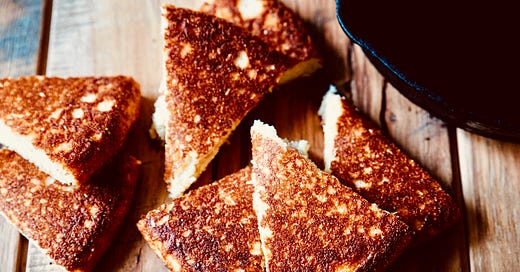Cornbread: Sweet Music to the Mouth - No. 116
How to make the best pan of cornbread & why it matters right now
Welcome to my new subscribers and big thanks to longtime readers! Today I dive into a subject you might have already perfected or perhaps never tried—cornbread. It’s a touchy topic, full of land mines, but also memories. Regardless of preferences—and I do have a survey for your opinions—let’s make better cornbread, shall we? Or even if you have no cornb…



